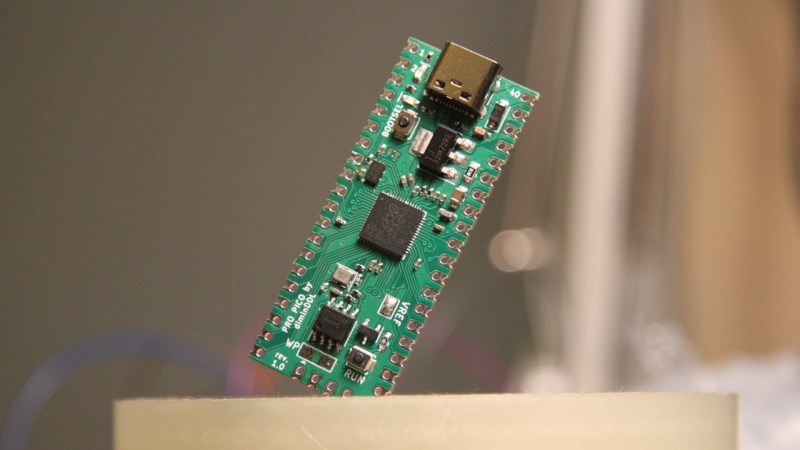Ever feel like the Pi Pico board could be doing way more given its footprint? Does it bother you that the RP2040’s ADC quality is even further decreased because of the noisy onboard switching regulator? Miffed about decisions like the MicroUSB socket, the 2MB flash, or lack of the reset button? [Dmytro] brings us an open-source Pi Pico design, sporting the same RP2040 and a fully compatible footprint, but adding a number of improvements to its surroundings.
There’s a good few additions, all of them hacker-friendly – [Dmytro] adds comfortably-spaced reset and boot buttons, a USB-C socket, a dedicated low-noise voltage reference for the ADC, one more LED, and an I2C EEPROM footprint socket that is compatible with FRAM chips. Everything worth preserving is preserved – the pinout stays the same, including the SWD connector, which now sports an extra RESET pin. The bottom side USB testpoints remain, with only the four testpoints changed for more useful signals. Last but not least, the switching regulator is replaced by the venerable 1117 – you lose the ability to power your Pico from two AAs, and the capacitor series resistor requirement isn’t great, but you can easily put one of the drop-in 1117 replacement regulators on there.
What’s great is that the design is fully open-source, with KiCad files available. Want to design your own Pi Pico footprint board, improve upon this one even further, or maybe make a more tailored one? Treat yourself to the GitHub repository! There’s also a pinout diagram and a KiCanvas schematic for all your tinkering needs. We’ve covered drop-in replacements for classic drawer-inhabiting parts like the Pi Zero, for the 7805 (twice!), the 6502 CPU, and even for the DE9 serial port connector. No matter the purpose, they’re always a joy to see.

















Besides the better powerregulation and maybe better pins (and potentially cleaner adc). Basicly what the aliexpress sellers are selling based on other board designs. Hopefully they switch using this design or better powersupply that still is clean but just as cheap. And most sport usbc anyway. Micro is out (sadly in a way)
“micro usb is out”. Until you try to make a very small board, which should have an USB socket and you realize micro USB is half the length of USB-c.
But RP2040 ADC still buggy and limited to about 9 bits of resolution…
yeahhhhh, hence the “ADC quality is *even* further decreased” in the intro, which is why it makes sense to me that you’d put in some extra effort that could help it perform a little bit better.
The RP2040 is not even close to my first choice for an ADC application. However, you can supply your own VRef to the Pico. I believe that mitigates a lot of the switcher noise people are complaining about.
While the Pico’s 3.3V power supply is noisy, a linear VR is not necessarily better (as some in the comments are saying). Since the Pico has a buck/boost regulator, you can run it off of batteries like a single cell lipo or even a single AA alkaline. And, you can switch between battery/boost mode and USB/buck mode seamlessly. Hard to do with a linear VR. Also, the switcher runs a lot cooler than a linear VR – maybe not an issue for some but try running power hungry peripherals like a Wiz850io ethernet module or a WiFi chip like the PicoW has..
This looks like an excellent RP2040 board! Great inspiration. However, if you’re looking for a crappier of the Pico (with more features!) then check out the CRAPi2040
https://hackaday.io/project/192207-crapi2040